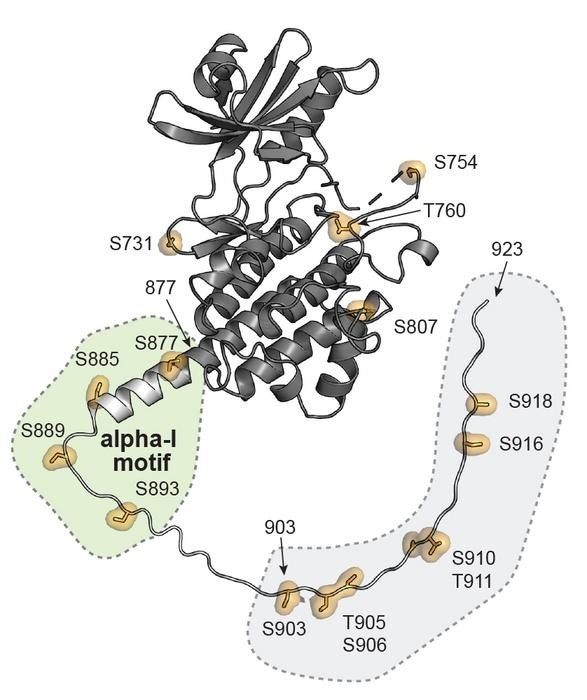Legume plants are unique in that they can interact with rhizobia, which are soil-dwelling bacteria that fix nitrogen.
 Dark Gray is the Crystal Structure and Light Gray is the Modeled Structure. Image Credit: Abel & Nørgaard et al. 2024
Dark Gray is the Crystal Structure and Light Gray is the Modeled Structure. Image Credit: Abel & Nørgaard et al. 2024
When a plant experiences nitrogen starvation, legumes, and rhizobia form a symbiotic relationship that enables the plant to flourish without the need for an outside nitrogen supply. On the plant's root, symbiotic nodules form, and nitrogen-fixing bacteria quickly settle in.
The symbiotic signal from rhizobia perception to nodule formation is mediated by the cell-surface receptor SYMRK (symbiosis receptor-like kinase). Until recently, the receptor's activation mechanism was unknown.
Four crucial phosphorylation sites that serve as the catalyst for the symbiotic relationship between legume plants and nitrogen-fixing bacteria have now been discovered by the researchers in this study.
The symbiotic pathway's first stages at the cell surface are well known, but the research community has long struggled to comprehend how the signal is transmitted later on.
An important first step toward enabling crop plants to develop symbiotic relationships with nitrogen-fixing bacteria is the identification of these critical phosphorylation sites.
We knew that the receptor and its activity is essential for the establishment of symbiosis, but we didn’t know how or why. Phosphorylation is a common mechanism for regulating kinase activity, so we theorized that SYMRK function was tied to specific phosphorylations.”
Dr Nikolaj Abel, Postdoc, Aarhus University
Multiple phosphorylation sites were found in various regions of the SYMRK kinase through collaborations with the lab of Ole Nørregaard Jensen at the University of Southern Denmark. By reducing or simulating phosphorylations in vivo, the researchers were able to identify the critical sites.
In particular, mutations at four locations in the N-terminal region of SYMRK resulted in significant phenotypes.
We explore the impact of site-specific mutations by creating receptor variants and reintroducing them into plants lacking the functional SYMRK receptor. Observing either spontaneous nodulation without rhizobia or the absence of nodulation despite their presence indicates that we’ve targeted an element crucial to the symbiotic pathway.”
Dr Nikolaj Abel, Postdoc, Aarhus University
The researchers ascertained the structure of the intracellular domain of SYMRK to comprehend the locations of the identified phosphorylation sites on the SYMRK kinase.
We needed to be able to map the phosphorylation sites onto a structural model of the SYMRK kinase to truly understand how these phosphorylation sites enable downstream signaling. We identified a structurally conserved motif in the N-terminal alpha-helical region which we termed ‘the alpha-I motif’. This region contains the four conserved phosphorylation sites.”
Malita Malou Malekzadeh Nørgaard, PhD-Student, Aarhus University
Enabling Root Nodule Symbiosis in Important Crops is the Aim
Enabling root nodule symbiosis in significant crops like rice, barley, and maize is the ultimate objective. Since these crops have huge carbon footprints and require a lot of nitrogen fertilizers to grow, small-holder farmers are unable to achieve consistent yields.
The researchers think their newfound understanding of the phosphorylation sites essential for starting the nodulation program in legume plants holds promise for transferring nitrogen-fixing traits into crops.